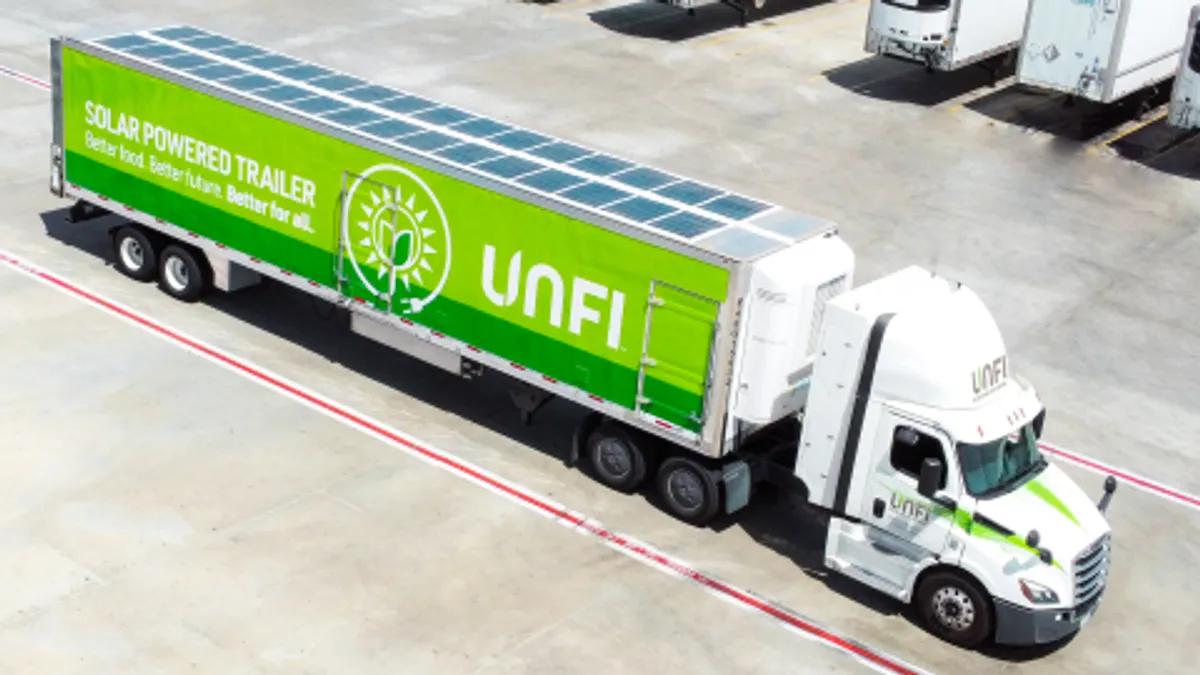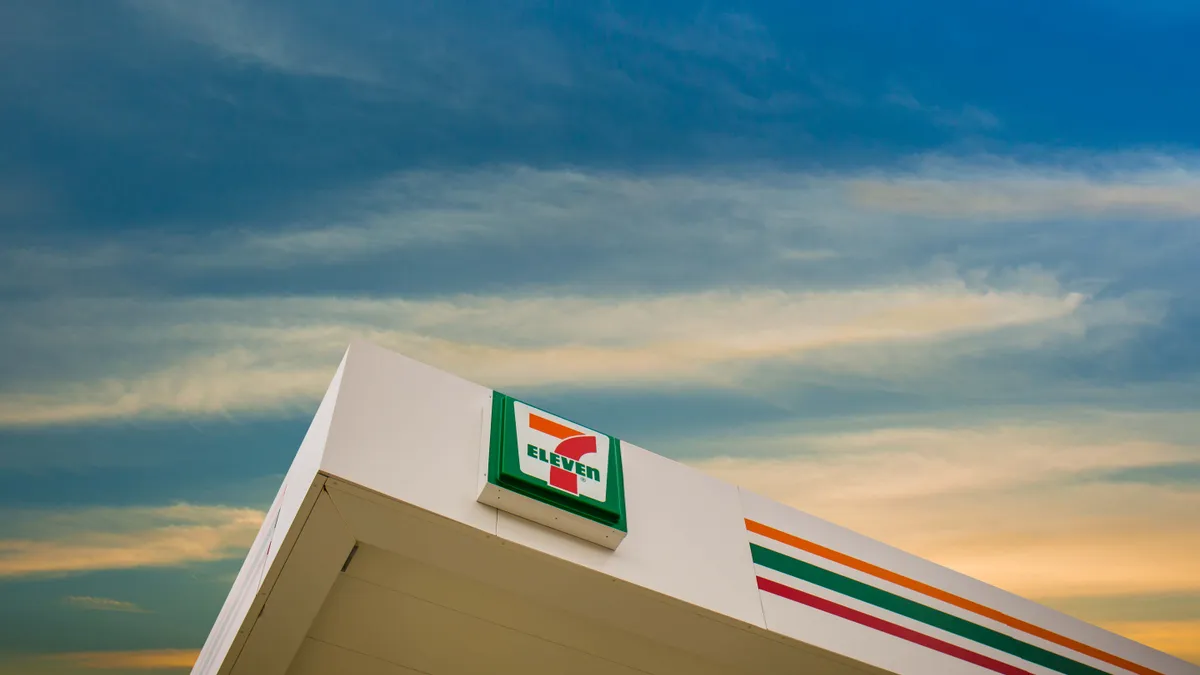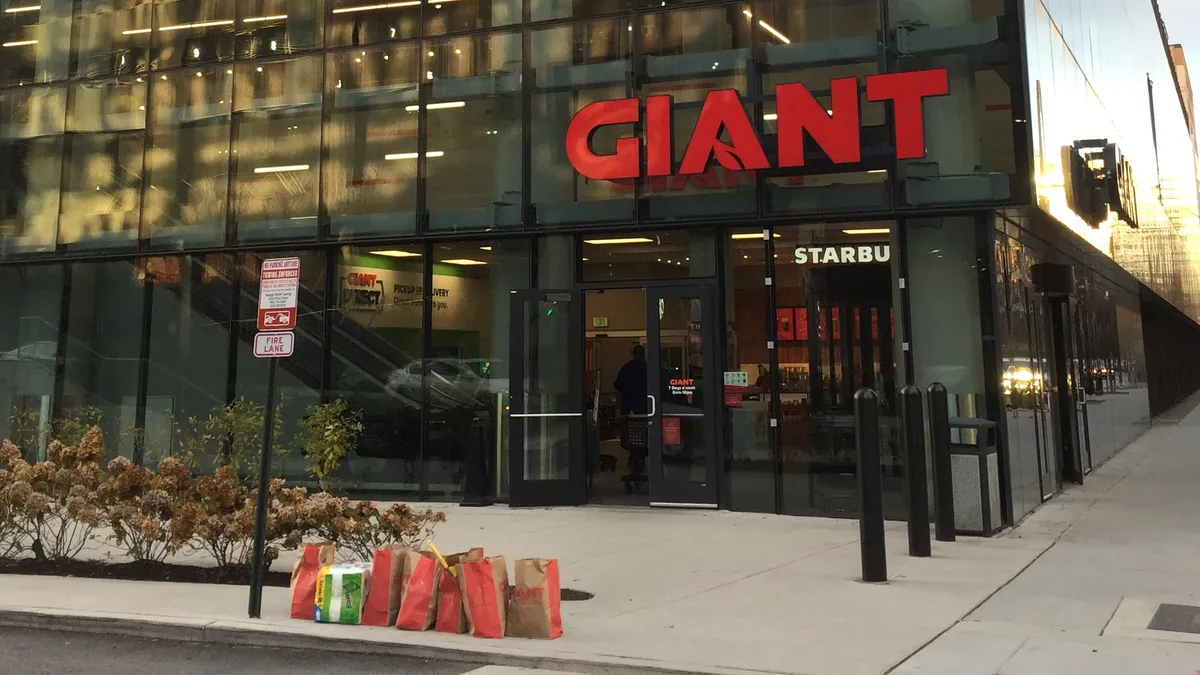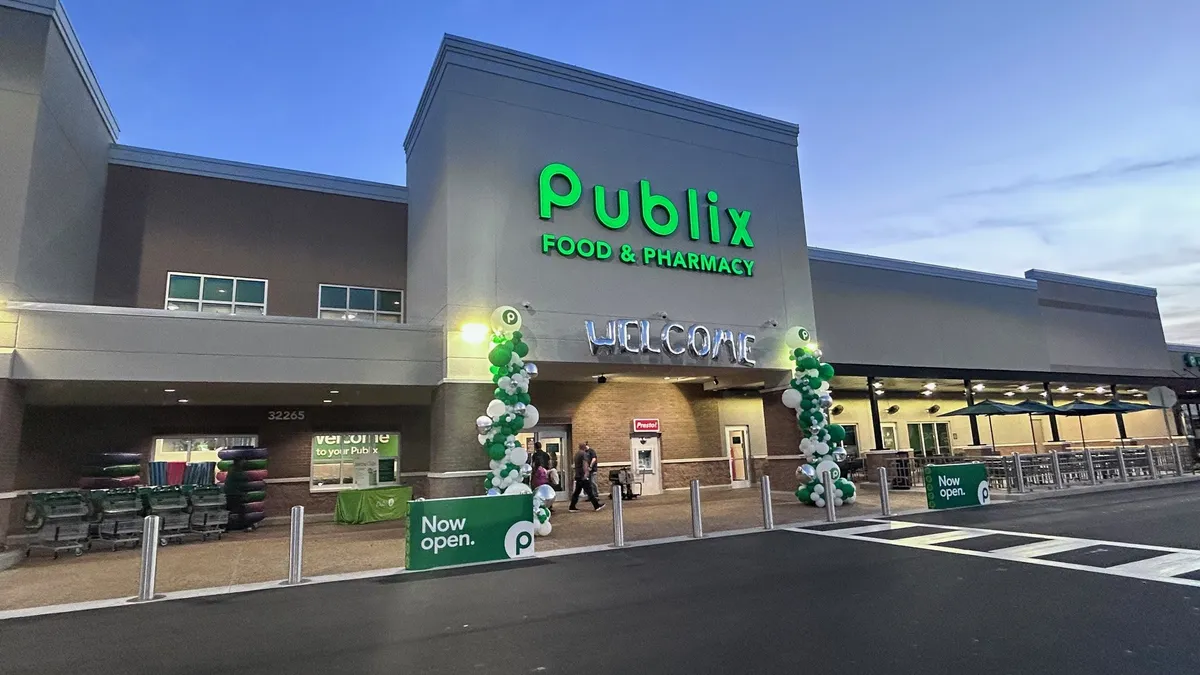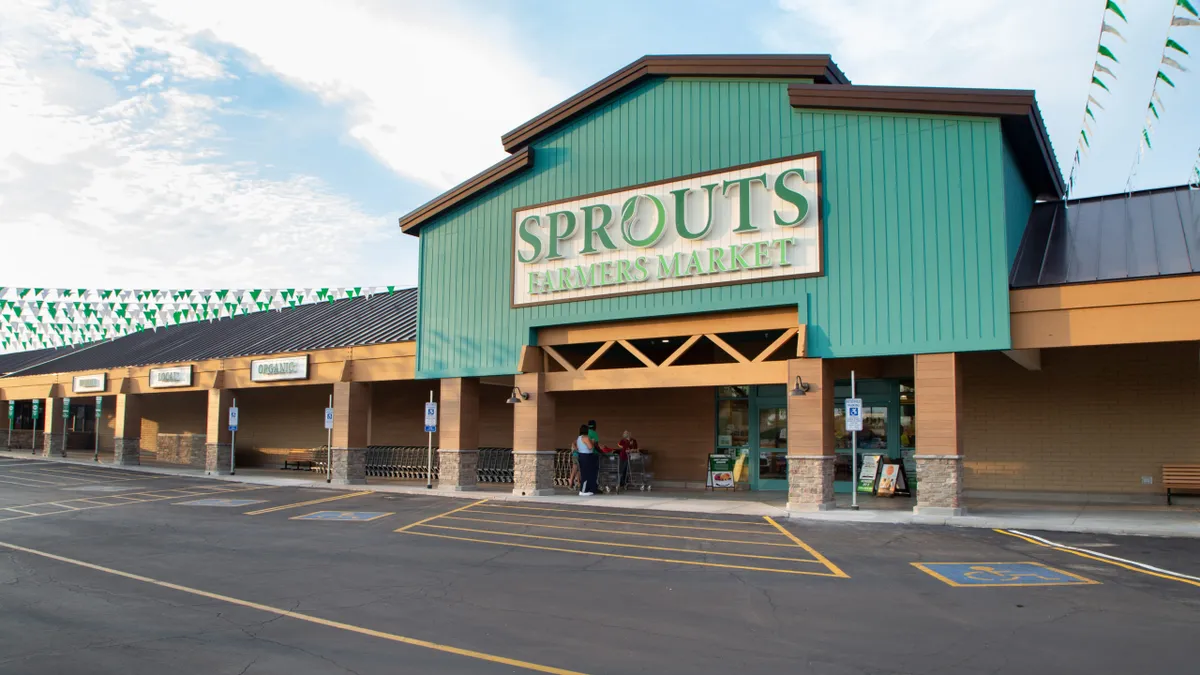Editor’s note: This story is the second installment in a series looking at the benefits of industry consolidation. Previous articles sponsored by BMO Harris Bank can be found here.
Large organizations have gotten into M&A as a way to bring in new capabilities in ingredient innovation, expand their product portfolios, access new customers and increase their geographic reach, according to retail executives surveyed for a recent A.T. Kearney study on retail M&A.
However, this is not entirely by choice. Within the industry, M&A has evolved into a responsive tool for companies to use as they shift through the ever-changing market demands. M&A is now seen as a way to enter new markets, broaden the appeal of products, jump on trends that drive growth, and generally stay abreast of what consumers are asking to eat.
“Typically, it's more cost effective to buy new innovation than it is to create it on their own because there is usually some sort of track record that shows success there," Brian Todd, president of The Food Institute told Food Dive. "That has been a trend we’ve seen on the product side, and now in technology and other areas as well — particularly on the supermarket chain side.”
It began slowly, but with category-jumping acquisitions like Hershey's 2015 purchase of Krave jerky, things changed quickly. Analysts say with this purchase, Hershey went from a leader in U.S. confectionery to a company that could become a snacking powerhouse, too.
“Typically, it's more cost effective to buy new innovation than it is to create it on their own because there is usually some sort of track record that shows success there. That has been a trend we’ve seen on the product side, and now in technology and other areas as well — particularly on the supermarket chain side.”

Brian Todd
President, The Food Institute
“Meat snacks are a hot space because of a millennial and young consumer push toward healthier snacking, and it’s a real protein push with the beef jerky,” Dayna Fields, senior M&A reporter with Mergermarket, told Food Dive. “The fact that Hershey actually took a big step outside of chocolate and went into the meat snacks business, I think it says a lot about protein snack and consumer trends and where the large food companies think growth is — or will be.”
Since then, other deals have reinforced this philosophy by adding new categories and services, like Hormel's 2016 acquisition of Justin's nut butter, Kellogg's purchase of RXBAR in 2017, Campbell Soup's recently completed deal to buy Snyder's-Lance, and H-E-B’s purchase of on-demand delivery service Favor.
Encouraging competition
Mergers are no longer about consolidating the competition. With consumers shunning full meals and processed items in favor of snacks and fresh products, Big Food has struggled to grow with traditional products, making acquisitions an increasingly attractive way to quickly get in lockstep with trends in organic, convenience, snacking or trendy new flavors.
Acquisitions are also an ideal method for Big Food to get products to market faster. By purchasing a business with an already established customer base, companies get a jump start into a new category — without the time and investment associated with developing a trendy product.
In fact, as the drive for sales, innovation and differentiation continues — coupled with shareholder pressure — an annual report from A.T. Kearney found that large food and beverage companies are likely to keep using M&A to stay relevant.
The numbers reflect this assessment. Last year set M&A records with 553 industry mergers. This year, as predicted, is shaping up to be similarly active. By early September, more than 400 deals were already completed. Todd said the industry is on par to at least match last year's level of deals.
However, companies have to be on the lookout for opportunities and innovative brands to acquire. B&G Foods, which completed 20 acquisitions from 1997 to 2017, is one of the most active in this space. The company, which currently owns more than 50 brands, grew in net sales from $129 million to $1.4 billion — a 985% increase — in just a decade.
“If you look at our business, we manufacture, sell and distribute high quality, branded, shelf-stable products across the U.S., Canada and Puerto Rico,” CFO Bruce Wacha previously told Food Dive. He added that the company looks for new brands in similar categories to ones they already own, where there could be synergies for sales and manufacturing.
Beyond looking for synergies, B&G targets brands which have opportunity left untapped by their current ownership. B&G’s mission is to find those brands, buy them and reinvigorate them, according to Wacha.
While some analysts are wary of B&G's super-acquisitive strategy, Todd said the aggression with which it continually acquires and sheds brands make the approach successful for both the company and the shareholders.
The financial return of this strategy is apparent through B&G’s recent sale of Pirate Brands to Hershey for $420 million — four years after acquiring the brand for $195 million. The sale was a surprise to many, especially because Pirate Brands makes a center-store snack product oriented toward the better-for-you market — and it was one of B&G's top revenue drivers.
In the press release about the acquisition, B&G CEO Bob Cantwell touted the sale's financial opportunity.
"By selling Pirate Brands at a very attractive multiple and using the net proceeds to reduce long-term debt, we will significantly reduce our leverage, which positions us very well for future acquisitions,” he said in the release.
"By selling Pirate Brands at a very attractive multiple and using the net proceeds to reduce long-term debt, we will significantly reduce our leverage, which positions us very well for future acquisitions.”

Bob Cantwell
CEO, B&G Foods
Todd said B&G is likely gearing up for another big acquisition that will take a lot of cash.
Another popular strategy to enliven large CPG company portfolios is to bring the innovation in-house, launching venture capital arms and funding incubators and accelerators. These in-house think tanks are dominated by small companies whose financial lifelines are tied to quickly creating products that consumers want to find in the market.
Since the existence of small companies is riding on their ability to break into the market, it is unsurprising they are creative in their business strategies and nimbly adjustment to consumer feedback. Perhaps the most noteworthy consequence of these companies’ responsive nature is that they can create products that experience explosive — and sometimes uncontrollable — growth. Often, this happens at the expense of Big Food.
“They’re entering the marketplace and they’re causing havoc with the big brands because their model is so upside down,” Phil Kafarakis, president of the Specialty Food Association, told Food Dive. "It’s a dangerous model because maybe they can’t scale up fast enough, but they’re winning in a variety of categories.”
Instead of fighting the rising tide of innovation, Big Food has chosen to adopt some of these upstart companies and integrate them into their portfolios.
Many industry analysts agree with this mindset and argue that acquisitions are the ideal strategy for growth. The smaller companies can teach large CPGs how to disrupt their processes and rethink product, speed to market, agile marketing techniques and their use of digital to capture consumers.
And while they don't always end in outright acquisitions by companies they work with, there have been numerous success stories through the accelerator approach. EPIC Provisions, a line of grass-fed, animal-based protein bars whose founders worked with SKU, a consumer products accelerator, was bought by General Mills for an estimated $100 million in 2016.
Similarly, the Chobani Food Incubator worked with Kettle & Fire, a bone broth made with organic ingredients from grass-fed cows. It is now sold at many stores nationwide.
David challenges Goliath
Besides taste trends, large CPG companies can learn much from startup companies about effectively maneuvering in the online space, or reorienting marketing strategies to resonate with millennials through a relatable story. Small food companies deploy a more decentralized, entrepreneurial, fail-fast-fail-early model that allows them to test products and react accordingly based on feedback.
“In the past few years we’ve seen more and more companies eyeing innovation,” said Todd. "They’re all looking at the omnichannel experience: ordering mobile-ly, home delivery, and areas that [for] many of the retailers, are not their mainstay.”
Grocery stores are also innovating. On-demand ordering and delivery is rapidly gaining popularity. With service providers like Instacart and Shipt, and Amazon’s takeover of Whole Foods last year, the game changed for grocery home delivery service. Now food manufacturers’ traditional delivery pipeline has been permenently disrupted. According to grocery industry group Food Marketing Institute, 70% of people will order groceries online by 2022. Clearly, to remain relevant, the delivery chain from grocer to consumer needs to be altered.
Retailers are taking note. One opening they have identified is playing up the convenience factor that is driving many shoppers’ choices by branching out from grocery and into the meal providing business though meal kits, in-house culinary centers and delivery. According to the U.S. Department of Agriculture’s Economic Research Service, consumers now spend more than $800 billion each year on restaurants and meals outside the home — slightly more than the $793 billion on meals consumed at home. Nevertheless, there is still growth in the grocery sector — at-home spending has grown 59% since 2003 — except it is mainly driven by fresh foods that require minimal preparation.
“In the past few years we’ve seen more and more companies eyeing innovation. They’re all looking at the omnichannel experience: ordering mobile-ly, home delivery, and areas that [for] many of the retailers, are not their mainstay.”

Brian Todd
President, The Food Institute
Recognizing that the demand for fresh, convenient and easy to prepare is here to say, many of the legacy companies have profitably adopted the attitude that if you can’t beat the model, join those who are profiting from it.
Recently, Kroger purchased Home Chef meal kits, H-E-B brought on-demand delivery service Favor on board, Target bought Shipt and Walmart grabbed Jet.com.
Even United Natural Foods, a distributor and a strong player in the natural and organic industry, felt the need to reach new markets and customers. This summer, UNFI bought grocery retailer and wholesaler Supervalu. Executives announced during a conference call for the announcement that their intention was to diversify and gain an “expanded universe of customers” while “enabling cross-selling opportunities.”
While everyone will have to wait to see what these cross-selling opportunities will be, likely it will involve UNFI leveraging Supervalu’s capabilities in perishable foods, especially for its newly-launched fresh meal line called Quick & Easy.
Putting it all under one roof: a case study
Retailers and CPG companies want what their customers want, and customers want things that relate to them and make sense. But retailers also have to cater to different generations, all of which have a unique set of priorities. Finding that balance is where the industry finds itself faced with an existential question: How does a grocery store show everyone that it can cater to individual needs?
The answer seems to come from acquiring companies that can offer different capabilities.
“You look at Albertsons trying to buy Rite-Aid. Why are they doing that? Because the experience of a grocery store and a pharmacy is interactive these days,” Kafarakis said.
And though the Albertsons-Rite-Aid merger was called off due to varied shareholder concerns, the idea is still one that can be revived. To continue similar profit margins that stores saw in recent years, retail companies are looking to emerging channels, including convenience and drug stores and foodservice.
The foodservice market — which includes meal kits, prepared foods and in-store supermarkets — accounts for 21.6% of the market. According to the Specialty Food Association, from 2015 to 2017, it grew 12.8% — while the overall retail food market grew just 1.4%.
This strategy to merge all consumers’ dining options under one roof is already paying dividends. As consumers become strapped for time, a one-stop shop seems to solve their problems. Meal kits alone, Bain & Co. estimates, are worth $1.5 billion annually. H-E-B is at the forefront of this change with a large meal kit selection, in-store restaurants, curbside pickup and on-demand alcohol delivery.
H-E-B's c-suite realizes that with competition tightening up from every angle, the store must differentiate itself from its competitors through nontraditional acquisitions in order to hold its ground as a dominant player in the Texas grocery market.
"Our primary goal is to enable our customers to shop, pay for and receive their products in whatever way they choose, all while delivering an exceptional customer experience,” Martin Otto, chief operating officer at H-E-B said in a statement.
This series is brought to you by BMO Harris Bank, a leader in commercial banking. To learn more about their Food & Beverage expertise, visit their website here. BMO Harris Bank has no influence over Food Dive's coverage.










